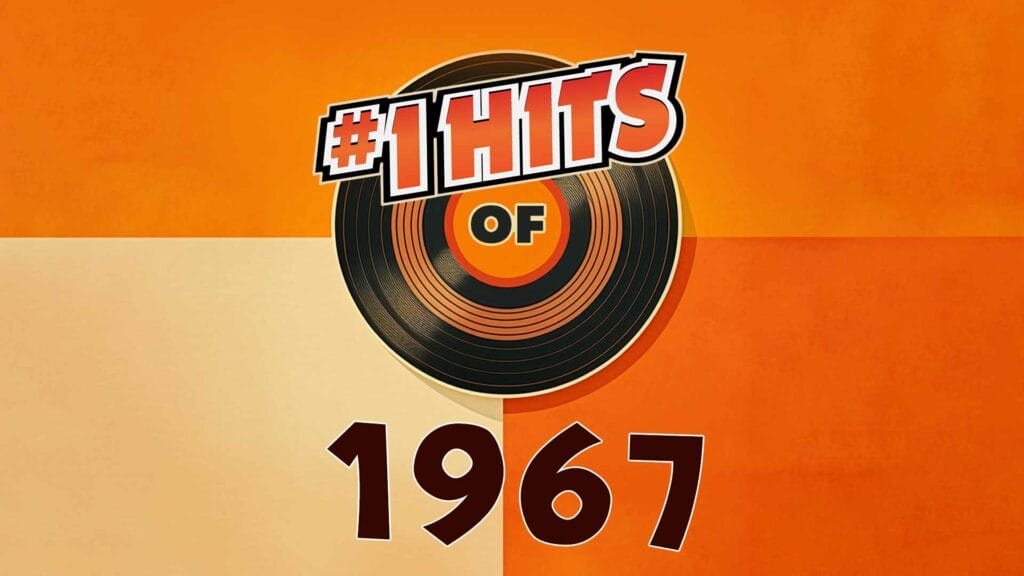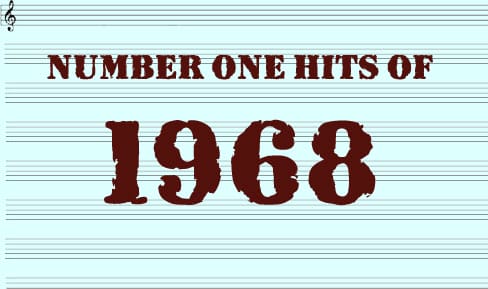 |
||||
|---|---|---|---|---|
The Number One Hits Of 1944 |
||||
| November 6, 1943 – January 28, 1944 The Mills Brothers Paper Doll The Mills Brothers prominence in the 1920s and enjoyed a long and successful career spanning over six decades. Consisting of four brothers – John Jr., Herbert, Harry, and Donald Mills – the group was known for their tight harmonies, innovative vocal techniques, and unique ability to imitate musical instruments with their voices. “Paper Doll” spent 12 weeks at the top of the Billboard charts and sold over six million copies, making it one of the best-selling singles of all time at that point. The song’s success further solidified the Mills Brothers’ status as one of American music history’s most popular and groundbreaking vocal groups. Today, “Paper Doll” remains a classic and is considered one of the signature songs of the Mills Brothers’ extensive repertoire. |
||||
| January 29, 1944 – March 3, 1944 Glen Gray and His Orchestra My Heart Tells Me (Should I Believe My Heart?) Glen Gray was an American jazz saxophonist and bandleader of the Casa Loma Orchestra, one of the most popular swing bands during the 1930s and 1940s. “My Heart Tells Me” was written by Mack Gordon and Harry Warren. It was featured in the 1943 film “Sweet Rosie O’Grady” and became a hit for Glen Gray and His Orchestra in 1944. |
||||
| March 4, 1944 – April 21, 1944 Jimmy Dorsey and His Orchestra Bésame Mucho (Kiss Me Much) Jimmy and his younger brother Tommy formed the Dorsey Brothers Orchestra in 1934, but they split in 1935 due to personal and professional disagreements. “Bésame Mucho” is a popular Mexican song written by Consuelo Velázquez. It was first recorded by Jimmy Dorsey and His Orchestra in 1944 and has since been covered by numerous artists. |
||||
| April 22, 1944 – May 5, 1944 Guy Lombardo and His Orchestra It’s Love-Love-Love Guy Lombardo and His Royal Canadians gained nationwide fame through radio broadcasts and recordings. “It’s Love-Love-Love” was written by Mack David, Joan Whitney, and Alex Kramer. Guy Lombardo and His Orchestra recorded the song, and it became a hit in 1944. |
||||
| May 6, 1944 – June 9, 1944 Bing Crosby I Love You Bing was an avid golfer and co-founded the Bing Crosby National Pro-Am Golf Tournament, now known as the AT&T Pebble Beach Pro-Am. “I Love You” was written by Cole Porter and was featured in the 1944 film “Mexican Hayride.” Bing Crosby’s recording of the song became a hit during the same year. |
||||
| June 10, 1944 – June 30, 1944 Harry James and His Orchestra I’ll Get By (As Long as I Have You) James first gained national attention as a member of the Benny Goodman Orchestra in the late 1930s. “I’ll Get By” was written by Fred E. Ahlert and Roy Turk in 1928. Harry James and His Orchestra’s version became popular in 1944 during World War II. |
||||
| July 1, 1944 – July 7, 1944 Bing Crosby I’ll Be Seeing You Bing Crosby was among the first artist to pre-record his radio shows, which allowed for better sound quality and editing. “I’ll Be Seeing You” was written by Sammy Fain and Irving Kahal. The song became an anthem of World War II and was popularized by Bing Crosby’s 1944 recording. |
||||
| July 8, 1944 – July 14, 1944 Harry James and His Orchestra I’ll Get By (As Long as I Have You) In 1939, Harry James formed his own orchestra, quickly becoming popular due to his distinctive trumpet playing and energetic sound. The orchestra’s repertoire included a mix of jazz standards, ballads, and popular songs of the time. |
||||
| July 15, 1944 – August 4, 1944 Bing Crosby I’ll Be Seeing You Bing Crosby was an American singer, actor, and radio personality who became one of the best-selling recording artists of the 20th century. Born Harry Lillis Crosby Jr. on May 3, 1903, in Tacoma, Washington, he grew up in a musical family and began singing at an early age. With his distinctive warm baritone voice, Crosby became one of the most influential and successful crooners of his time. |
||||
| August 5, 1944 – October 6, 1944 Bing Crosby Swinging on a Star “Swinging on a Star” was written by Johnny Burke and Jimmy Van Heusen. The song was featured in the 1944 film “Going My Way” and won an Academy Award for Best Original Song. Bing Crosby’s recording was a hit in 1944. |
||||
| October 7, 1944 – October 13, 1944 Mills Brothers You Always Hurt the One You Love The group was initially known as “Four Boys and a Guitar,” with John Jr. on guitar and the other brothers singing. They became famous for their unique vocal harmonies and ability to imitate musical instruments with their voices. |
||||
| October 14, 1944 – October 20, 1944 Dinah Shore I’ll Walk Alone Dinah Shore was an American singer, actress, and television personality born on February 29, 1916, in Winchester, Tennessee. She was born Fannye Rose Shore to Russian-Jewish immigrant parents Anna and Solomon Shore. |
||||
| October 21, 1944 – November 3, 1944 Mills Brothers You Always Hurt the One You Love The Mills Brothers frequently collaborated with famous musicians like Duke Ellington, Louis Armstrong, and Bing Crosby. They performed for several U.S. Presidents, including Franklin D. Roosevelt and Dwight D. Eisenhower. |
||||
| November 4, 1944 – November 24, 1944 Dinah Shore I’ll Walk Alone During World War II, she entertained troops and was known as “America’s Sweetheart.” She appeared in several films during the 1940s and 1950s, including “Up in Arms,” “Belle of the Yukon,” and “Aaron Slick from Punkin Crick.” Shore was also a successful radio personality, hosting her “Call to Music” show from 1943 to 1946. |
||||
| November 25, 1944 – December 8, 1944 Mills Brothers You Always Hurt the One You Love In the 1980s, The Mills Brothers experienced a resurgence in popularity, performing on TV shows and in commercials. They were inducted into the Vocal Group Hall of Fame in 1998. Their distinctive vocal style, innovative musical techniques, and enduring popularity have solidified The Mills Brothers’ place as a significant influence on American music history. |
||||
| December 9, 1944 – December 22, 1944 The Ink Spots and Ella Fitzgerald I’m Making Believe Ella Fitzgerald, an American jazz singer, was known as the “First Lady of Song” and “Queen of Jazz” due to her exceptional vocal range and improvisational skills. The Ink Spots were a popular vocal group known for their tight harmonies and distinctive style. “I’m Making Believe” was written by James V. Monaco and Mack Gordon. The song featured in the 1944 film “Sweet and Lowdown” was a hit for The Ink Spots and Ella Fitzgerald. |
||||
| December 23, 1944 – February 9, 1945 Bing Crosby and The Andrews Sisters Don’t Fence Me In Bing Crosby was a renowned American singer and actor, while The Andrews Sisters were a popular close-harmony singing group during the swing and boogie-woogie eras. “Don’t Fence Me In” was written by Cole Porter for the 1944 film “Hollywood Canteen.” Bing Crosby and The Andrews Sisters’ recording became a hit, topping the charts for eight weeks. |
||||
|
The Biggest Pop Artists of 1944 include: Charts based on Billboard music charts. |


